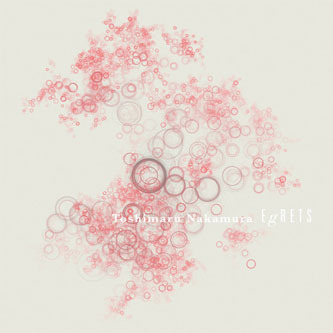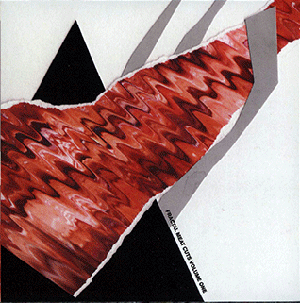 There are few musical instruments that are as conceptually pleasing as the no-input mixing board. It is part of a rich tradition in experimental music in which peripheral hardware and audio equipment are repositioned as musical instruments in their own right (turntables, effects pedals and tape recorders could be seen as other examples). It is a controller of sound without anything in the way of a conventional sound to control, a content-free methodology that has reminded many commentators of the Soto school of Zen. This, coupled with the unpredictability of its controls, is strongly reminiscent of the work and ideas of John Cage. In its illumination of the secret inner sound world of machinery, the no-input mixing board also belongs to traditions that explore the glitches and faults within electronic devices. And in its exploration of feedback it could be seen as a musical metaphor for the recursive loops explored in Douglas Hofstadter’s Gödel, Escher, Bach, the self reflecting on itself being the core of many mystical techniques and possibly even the source of consciousness itself.
There are few musical instruments that are as conceptually pleasing as the no-input mixing board. It is part of a rich tradition in experimental music in which peripheral hardware and audio equipment are repositioned as musical instruments in their own right (turntables, effects pedals and tape recorders could be seen as other examples). It is a controller of sound without anything in the way of a conventional sound to control, a content-free methodology that has reminded many commentators of the Soto school of Zen. This, coupled with the unpredictability of its controls, is strongly reminiscent of the work and ideas of John Cage. In its illumination of the secret inner sound world of machinery, the no-input mixing board also belongs to traditions that explore the glitches and faults within electronic devices. And in its exploration of feedback it could be seen as a musical metaphor for the recursive loops explored in Douglas Hofstadter’s Gödel, Escher, Bach, the self reflecting on itself being the core of many mystical techniques and possibly even the source of consciousness itself.
Toshimaru Nakamura is the no-input mixing board’s most prolific and articulate exponent, but if he was called as an expert witness he’d be highly likely to dispute the accuracy and/or relevance of most of that opening paragraph. Picking over the bones of an online interview with Perfect Sound Forever, Nakamura’s sonic explorations seem to have evolved from series of rejections; of volume; of ‘obvious’ sounds, approaches and effects treatments; of movement in the act of performance; of the expressive qualities and kinaesthetic interface of the guitar (the instrument he put aside in favour of the no-input mixing board); of self analysis (“Most of the things around my music are very not clear for me”); of Zen as any kind of inspiration (he views this as a projection of Western commentators based on their expectations of him as a Japanese musician); and of any kind of emotional expression in his performances (“I don’t try to spray my emotion to the audience”). He views his relationship with the instrument as an equal partnership, in which the unpredictable qualities of the mixing desk shape the resulting performance as much as he does. Besides this he says his music simply is what it is, and he resists any kind of attempt to read meaning into it.
So far so Yahweh… or Popeye. Call me cynical, but the “I am what I am” cliché gets wheeled out so often that it has become unsatisfying at best, and at worst in danger of seeming evasive, defensive or disingenuous. It’s increasingly difficult to believe that so many otherwise intelligent musicians have so little to say about what they do. Positioning music as a blank mirror onto which the listener projects their own qualities is a standard fallback position in this line of work, and a scorched earth approach to deflecting those projections should neither invalidate the audience’s hypotheses nor discourage them from formulating them. Creative artists are all too frequently unreliable narrators when it comes to public self-analysis. Wouldn’t it be lovely to see them challenged on occasion?
Regardless of whether or not Nakamura has raised his conversational game since the Perfect Sound Forever interview, the following is absolutely certain: Egrets is an astonishingly accomplished album and makes an ideal starting point for any reader who harbours misgivings about experimental electronics, improvisation or the no-input mixing board. The sound is plush, rounded and welcoming, full of rich, sensuous tones and somehow both teeming with textural detail while retaining an elegant spaciousness. The instrumental timbre and the poise of the performances are never less than exquisite, while the quality of the recording is peerless. The results are refreshingly unencumbered by any restrictive musicotheologies, which allows Nakamura to maintain a slippery balance between excerpted improvisations and loosely framed compositions while allowing for finely judged adornment in post-production.
The album is a showcase for the breath of styles and approaches possible from such a seemingly limited instrument. On opener” Nimb, Number 42″ ambient chords echo as though sounding in a cavernous space, slightly crunching around the edges as though the gain is too high as if to remind the listener that all recorded space becomes virtual. “Semi” is a duet with long-term collaborator Tetuzi Akiyama, a miraculously gifted guitarist who seems able to distil minimalism and motorik from blues and boogie at one extreme and channel what sounds like a free form Morton Feldman at the other. Here he is firmly in the latter mode, suspending single decaying notes over Nakamura’s insectoid snap, crackle and pop.
“Tane” and “Heater/Refrigerator” are collaborations with trumpeter Arve Henriksen, whose molestation of the instrument is intimately captured in its meaty physiological glory, all fingered pattering, heavy breathing and spattered saliva. The first of their two tracks on Egrets sees Nakamura adding tiny buzzes, drones and what briefly sounds like children’s song until the whole resembles an electronically detourned Chris Watson field recording. The latter revisits a similar soundscape at dawn, with aural mist wreathed around Henriksen’s primal scene. And If I didn’t know better from the album credits I would guess that the low end brass on “Yura” is John Butcher on saxophone played out against a tense sci-fi noir soundtrack. Much of this kind of music leaves me feeling like Peter Sellers in the Pink Panther movies, searching behind every item of furniture for Cato only to have my expectations regarding sound sources totally thwarted by the inevitably successful ambush.
The harmonic possibilities of the desk are further explored on “Nimb, Numbers 43 and 44.” The first consists of softly swelling tones treated with a single repeat of delay, a trick usually that has sadly inspired too many one trick ponies (delay, looping, reverb and echo frequently indicating a lazy preference for instant music). As one single track on the album it has the reverse effect, a conscious choice rather than an abdication of imagination. Closing the album is “Nimb, Number 45,” which starts between radio stations before introducing sub-bass dread, ending on delicately placed chiming electronics that make you want to press play and start again as soon as the disc is finished.
Egrets sees Toshimaru Nakamura extending a welcoming hand to newcomers without compromising his compellingly single-minded austerity. It is a triumph of controlled execution, breadth of imagination and sensitivity to the unexpected. Viewed in context, with a curious ear, its synthesis of influences and approaches stands as the perfect entry point to a century of electronic experimentation, blending as it does noise with reductionism, studio engineering with improvisation and a lateral thinker’s approach to instrumentation with a clear headed sense of sound design. In years to come we’ll probably be hailing it as the first genuine masterpiece to be made using this unlikeliest of sound sources.
-Seth Cooke-



